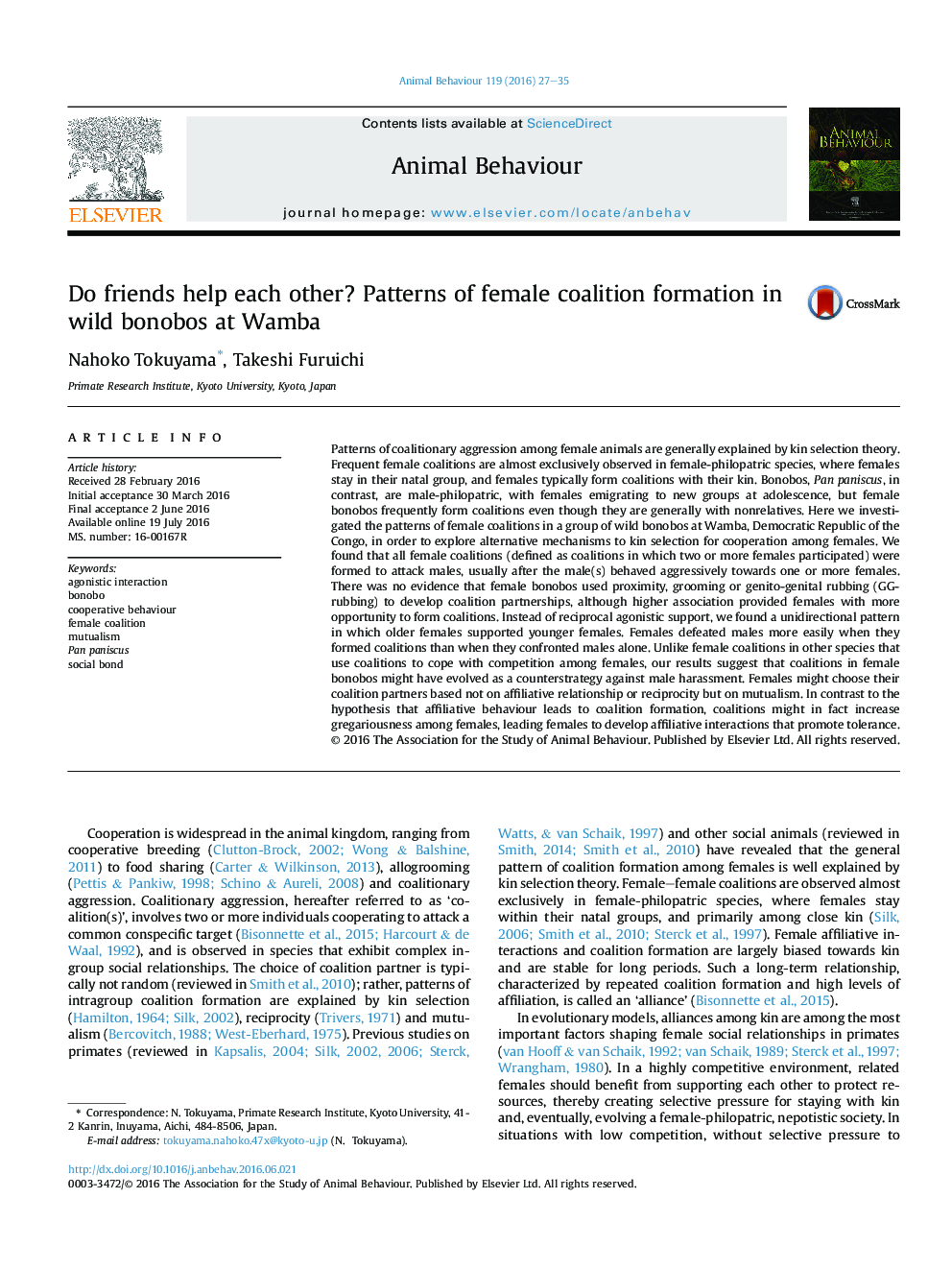| کد مقاله | کد نشریه | سال انتشار | مقاله انگلیسی | نسخه تمام متن |
|---|---|---|---|---|
| 2416260 | 1552209 | 2016 | 9 صفحه PDF | دانلود رایگان |

• We investigated coalition formation patterns in wild female bonobos.
• All female coalitions were formed to attack males.
• Females did not choose coalition partners based on their affiliative relationship.
• Older females supported younger females, but not vice versa.
• Females in coalitions won against males more easily than when alone.
Patterns of coalitionary aggression among female animals are generally explained by kin selection theory. Frequent female coalitions are almost exclusively observed in female-philopatric species, where females stay in their natal group, and females typically form coalitions with their kin. Bonobos, Pan paniscus, in contrast, are male-philopatric, with females emigrating to new groups at adolescence, but female bonobos frequently form coalitions even though they are generally with nonrelatives. Here we investigated the patterns of female coalitions in a group of wild bonobos at Wamba, Democratic Republic of the Congo, in order to explore alternative mechanisms to kin selection for cooperation among females. We found that all female coalitions (defined as coalitions in which two or more females participated) were formed to attack males, usually after the male(s) behaved aggressively towards one or more females. There was no evidence that female bonobos used proximity, grooming or genito-genital rubbing (GG-rubbing) to develop coalition partnerships, although higher association provided females with more opportunity to form coalitions. Instead of reciprocal agonistic support, we found a unidirectional pattern in which older females supported younger females. Females defeated males more easily when they formed coalitions than when they confronted males alone. Unlike female coalitions in other species that use coalitions to cope with competition among females, our results suggest that coalitions in female bonobos might have evolved as a counterstrategy against male harassment. Females might choose their coalition partners based not on affiliative relationship or reciprocity but on mutualism. In contrast to the hypothesis that affiliative behaviour leads to coalition formation, coalitions might in fact increase gregariousness among females, leading females to develop affiliative interactions that promote tolerance.
Journal: Animal Behaviour - Volume 119, September 2016, Pages 27–35